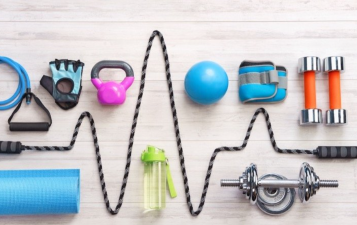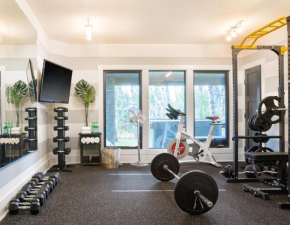What Type of Fitness Equipment Do You Really Need at Home?
Home fitness requires a balance of functionality, space utilization, and ease of use.
Home fitness requires a balance of functionality, space utilization, and ease of use.
Dumbbells – A fitness guru
Appearance: Compact and elegant, they take up minimal space around the house.
Practicality: They work all muscles, are highly practical, and even beginners can quickly master them.
Material: Highly dense cast iron, durable and stable, making them incredibly reliable.
Weight: Adjustable weight from light to heavy to suit your needs, making it easier for muscles to adapt.

Kettlebells – An effective fat-burning tool
Appearance: Stylish and stylish.
User experience: The handle design is comfortable and incredibly grippy, and the fat-burning effect is incredible.
Material: Made of high-quality materials, durable and safe, ensuring peace of mind for weight loss.
Recommendation: Effective fat-burning.
Stretching boards – a great tool for flexible stretching
Appearance: Compact and cute, easy to carry, allowing you to stretch anytime, anywhere.
User experience: Conforms to your foot shape, lightweight and convenient.
Recommendation: For those who want to achieve perfect body proportions, a stretching board is a must-have!
Tips for Purchasing Home Fitness Equipment for Fat Loss
- Personal Needs and Budget:
First, clarify your fitness goals and available budget. Beginners may not need high-end, professional equipment, while those with a basic foundation may require more specialized equipment.
Choose the necessary equipment based on your fitness plan. For example, if you primarily focus on aerobic exercise, consider a treadmill or stationary bike. If you focus on strength training, consider dumbbells, barbells, or resistance bands.
- Choose the Right Equipment Type:
Given space constraints at home, multi-functional equipment, such as an exercise bike or multi-trainer, is more appropriate.
For fat loss goals, focus on aerobic training equipment, such as a treadmill or elliptical machine, while also combining some strength training equipment, such as dumbbells and sit-up machines.

Combining Diet and Lifestyle for Home Fitness and Fat Loss
The Importance of a Balanced Diet:
A nutritionally balanced diet is an essential component of fat loss. Ensure your diet includes adequate protein, healthy fats, and complex carbohydrates, as well as a rich intake of vitamins and minerals. Increasing your intake of dietary fiber, such as vegetables, fruits, and whole grains, helps promote satiety and maintain stable blood sugar levels.
Avoid foods high in sugar, fat, and calories, and reduce your intake of processed and fast foods.
Manage calorie intake and output:
Balancing calorie intake and expenditure is central to fat loss. Increase calorie expenditure through exercise and daily activity, while reducing unnecessary calorie intake through dietary control.
Use a food diary or app to track your meals to help you become aware of your daily calorie intake.
Ensure an intense exercise program that combines aerobic and strength training to increase your basal metabolic rate and calorie expenditure.
Maintain good sleep and stress management:
Adequate sleep is crucial for fat loss, as insufficient sleep can affect hormone levels, increasing hunger and appetite and reducing satiety.
Aim for 7-9 hours of quality sleep each night.
Stress management is also crucial for fat loss, as chronic stress can lead to weight gain, particularly in the accumulation of abdominal fat.
Use relaxation techniques such as deep breathing, meditation, yoga, or other relaxation techniques to help manage stress.
